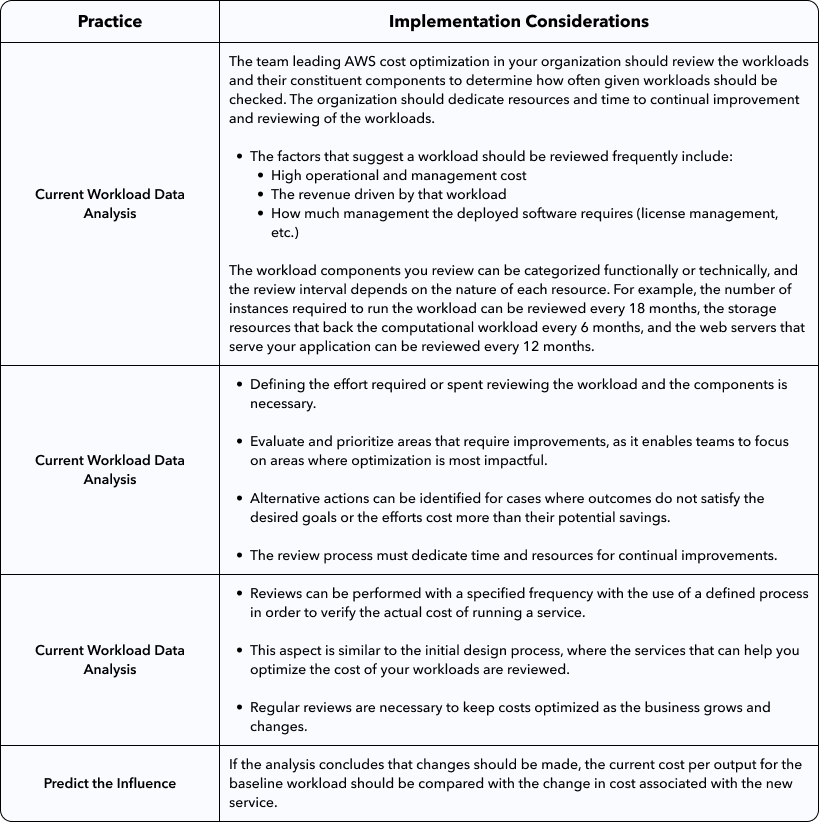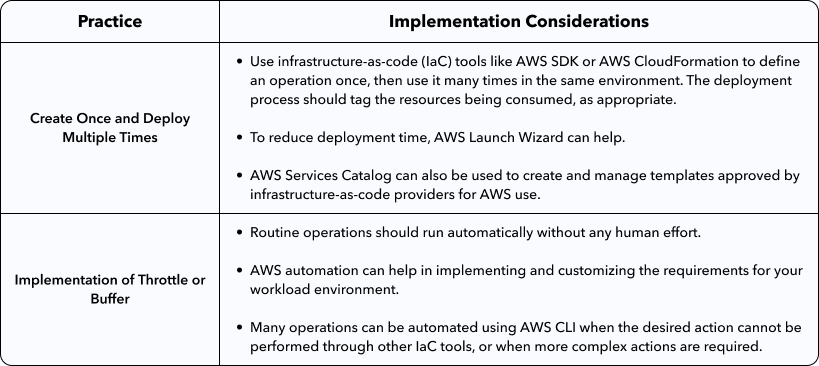This is post 5 of 5 of the Cloud Financial Management in AWS series by guest contributor Vikash Kumar. If this is your first encounter with this series, you may want to check out the first post in the series, “Best Practices for Cloud Financial Management in AWS”, before this one!
Optimization is an iterative process that happens over time as an organization grows and the needs of the business change. When it comes to optimizing how efficiently your organization uses the resources in its AWS environment, the process starts with understanding the AWS services available to you and how new features might help simplify your cloud architecture.
At a basic level, periodically reviewing the services and features provided by AWS can help you identify opportunities for optimizing your cloud costs. The ongoing review process should entail reviewing the existing services in use by your organization, identifying the architectural decisions that made a given service the right choice in the past, and verifying that the chosen service is still the most cost-effective option available. Likewise, when business requirements change, workloads that are no longer needed should be decommissioned, along with the components, resources, and supporting workloads that are not needed anymore.
In general, to have an effective Cloud Financial Management culture, everyone in the organization should be empowered to identify inefficient and cost-consuming processes as they are encountered. When management and operational workflows for your organization are time-consuming and inefficient, those processes should be reviewed to determine if they can be automated with the use of AWS services or third-party tools.
Define a Review Process and Analyze the Workload
To help optimize your cloud workloads over time, your organization should develop a review process that allows you to track the changing requirements for a given workload and develop improved management procedures. Such a review process shouldn’t become a burden in itself, however: workloads that account for more than 10% of your cloud spending should be reviewed every six months, while smaller workloads can be reviewed once per year.
Implementing this Practice
The table below lists some important factors to consider when optimizing your cloud resource usage over time:

Automate Your Operations
Automation has been mentioned a lot throughout this series, and a periodic review of your cloud environment is another task that should be automated as much as possible. Steps in your analysis—such as initiating the review process or quantifying the time and effort needed to perform administrative tasks—are also tasks that can be automated.
Overall, your organization should periodically evaluate the time and cost required to perform various operational tasks, then identify areas where automation can significantly reduce the human effort required.
Implementing this Practice
To effectively enable your organization to automate its operations, consider the following best practices during your implementation process:

Conclusion
As you have seen in this post, there are many different practices available to any organization that wishes to optimize their AWS environment over time. These practices are essential when the business requirements of the company change and the firm has to aggressively decommission the workloads, resources, and services that are no longer required. With the help of these practices, companies can optimize their cloud resource usage in an effective manner.
Written by Vikash Kumar of TatvaSoft
Vikash has a rich experience in digital content publications and you will find his many by-lines published in many reputed publications.

Comments